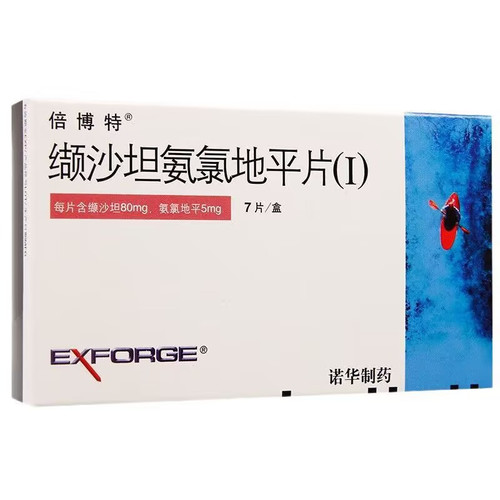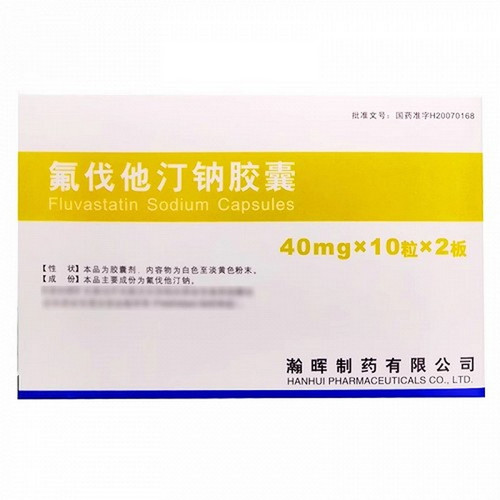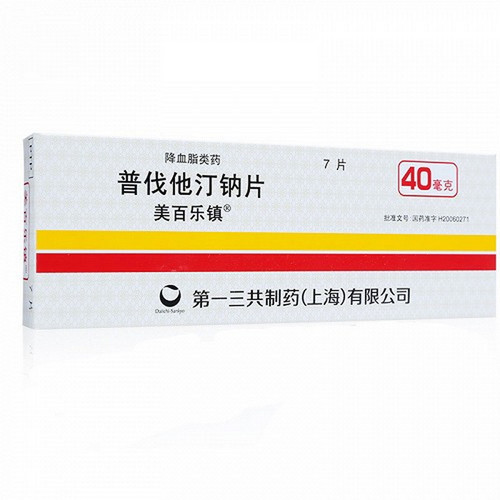Product Overview
[Drug Name]
Generic Name: Fluvastatin Sodium Extended-Release Tablets
Trade Name: Laishike
English Name: Fluvastatin Sodium Extended-Release Tablets
Chinese Pinyin: FuFaTaTingNaHuanShiPian (LaiShiKe)
[Ingredients]
The main ingredient of this product is fluvastatin sodium.
[Appearance]
This product is a yellow, round, film-coated tablet that appears light yellow after removal of the coating.
[Indications]
For patients with primary hypercholesterolemia and mixed dyslipidemia (Fredrickson types IIa and IIb) whose condition is not adequately controlled by a diet.
[Dosage and Administration]
Before and during treatment with this product, patients must maintain a low-cholesterol diet. The recommended dose is 20 or 40 mg once daily, taken with the evening meal or at bedtime.
[Adverse Reactions]
1. In placebo-controlled trials, the following adverse reactions occurred at an incidence greater than 1% in the placebo group: dyspepsia, insomnia, nausea, abdominal pain, and headache. Dyspepsia is dose-related and more common in patients taking 80 mg/day. Adverse reactions occurring in 0.5-0.9% of patients include sinusitis, flatulence, decreased sensation, dental problems, urinary tract infection, and elevated transaminases. 2. Since the marketing of fluvastatin sodium, there have been isolated reports of allergic reactions, particularly rash and urticaria. Extremely rare cases have included other skin reactions, thrombocytopenia, angioedema, facial edema, vasculitis, and lupus erythematosus-like reactions. 3. Patients with known hypersensitivity to fluvastatin or any other component of the drug. 4. Active liver disease or persistent unexplained elevated transaminases. 5. Pregnant and lactating women, as well as women of childbearing age who are not using reliable contraceptive measures. 6. Patients with severe renal insufficiency (creatinine greater than 260 μmol/L, creatinine clearance less than 30 mL/min).
[Contraindications]
Not yet established.
[Precautions]
1. Liver function: As with other cholesterol-lowering medications, liver function tests should be performed before starting fluvastatin sodium capsules and regularly during treatment. If alanine aminotransferase (ALT) or aspartate aminotransferase (AST) levels are persistently elevated to three times or more of the upper limit of normal, the drug must be discontinued. There have been isolated reports of possible drug-induced hepatitis. Use with caution in patients with a history of liver disease or those who consume significant amounts of alcohol. 2. Skeletal muscle function: Myopathy has been reported in patients taking other HMG-CoA reductase inhibitors. Such symptoms are rarely associated with fluvastatin sodium. If unexplained muscle pain, tenderness, or weakness occurs in conjunction with a significantly elevated creatine phosphokinase level, particularly if accompanied by fever or general malaise, myopathy should be considered and this product must be discontinued. 3. There are no reports on the efficacy of HMG-CoA reductase inhibitors, including this product, for homozygous familial hypercholesterolemia. Please read the package insert carefully and use as directed by your doctor.
[Use in Special Populations]
Precautions for Children:
Due to a lack of clinical experience with fluvastatin in patients under 18 years of age, its use is not recommended for patients under 18 years of age.
Precautions for Pregnancy and Lactation:
Because HMG-CoA reductase inhibitors reduce cholesterol synthesis and may reduce the synthesis of certain biologically active cholesterol derivatives, their use by pregnant or lactating women may be harmful to the fetus or infant. Therefore, HMG-CoA reductase inhibitors are contraindicated in pregnant and lactating women, as well as in women of childbearing age who are not using reliable contraceptive measures. If pregnancy occurs during treatment, fluvastatin must be discontinued. There is no data on the excretion of fluvastatin in breast milk; therefore, it should not be used by lactating women.
Precautions for Elderly Patients:
Studies in elderly patients have not shown decreased tolerance or the need for dose adjustment.
[Drug Interactions]
1. Food: There is no significant difference in the lipid-lowering effect of fluvastatin when taken with or 4 hours after dinner. 2. Ion Exchange Resin: Taking this product four hours after cholestyramine may result in a clinically significant additive effect compared to taking either drug alone. To avoid interactions that could result in binding of fluvastatin to the resin, this product should be administered at least four hours after taking the ion exchange resin. 3. Bezafibrate: Combining this product with bezafibrate may increase the bioavailability of fluvastatin by approximately 50%. Clinical studies of combining this product with immunosuppressants, gemfibrozil, and niacin combined with erythromycin have shown no effect on tolerability, but the risk of myopathy is increased, requiring close observation.
[Pharmacological Action]
This product is a fully synthetic cholesterol-lowering drug. It is a hydroxymethylglutaryl coenzyme A reductase inhibitor that converts HMG-CoA to 3-methyl-3,5-dihydroxyvaleric acid. It acts in the liver, inhibiting endogenous cholesterol synthesis, reducing cholesterol levels in hepatocytes, stimulating the synthesis of low-density lipoprotein receptors, and increasing LDL particle uptake, thereby lowering total plasma cholesterol concentrations. Fluvastatin sodium significantly slowed the progression of coronary artery disease, as measured by quantitative coronary angiography, in male and female patients aged 35-75 years with mild-to-moderate hypercholesterolemia (baseline LDL-C 115-190 mg/dL, or 3.0-4.9 mmol/L) and coronary heart disease. This randomized, double-blind, placebo-controlled clinical study evaluated 429 patients receiving either 20 mg of fluvastatin twice daily or placebo in addition to standard care. Fluvastatin sodium significantly slowed the progression of coronary artery disease, as measured by changes in minimum lumen diameter, percent stenosis diameter, or new lesion formation before and after treatment.
Storage: Store below 25°C.
Strength: 80 mg x 7 tablets
Packaging: Box
Expiration Date: 24 months
Approval Number: National Medicine Standard H20090179
Manufacturer: Beijing Novartis Pharmaceuticals Co., Ltd.







